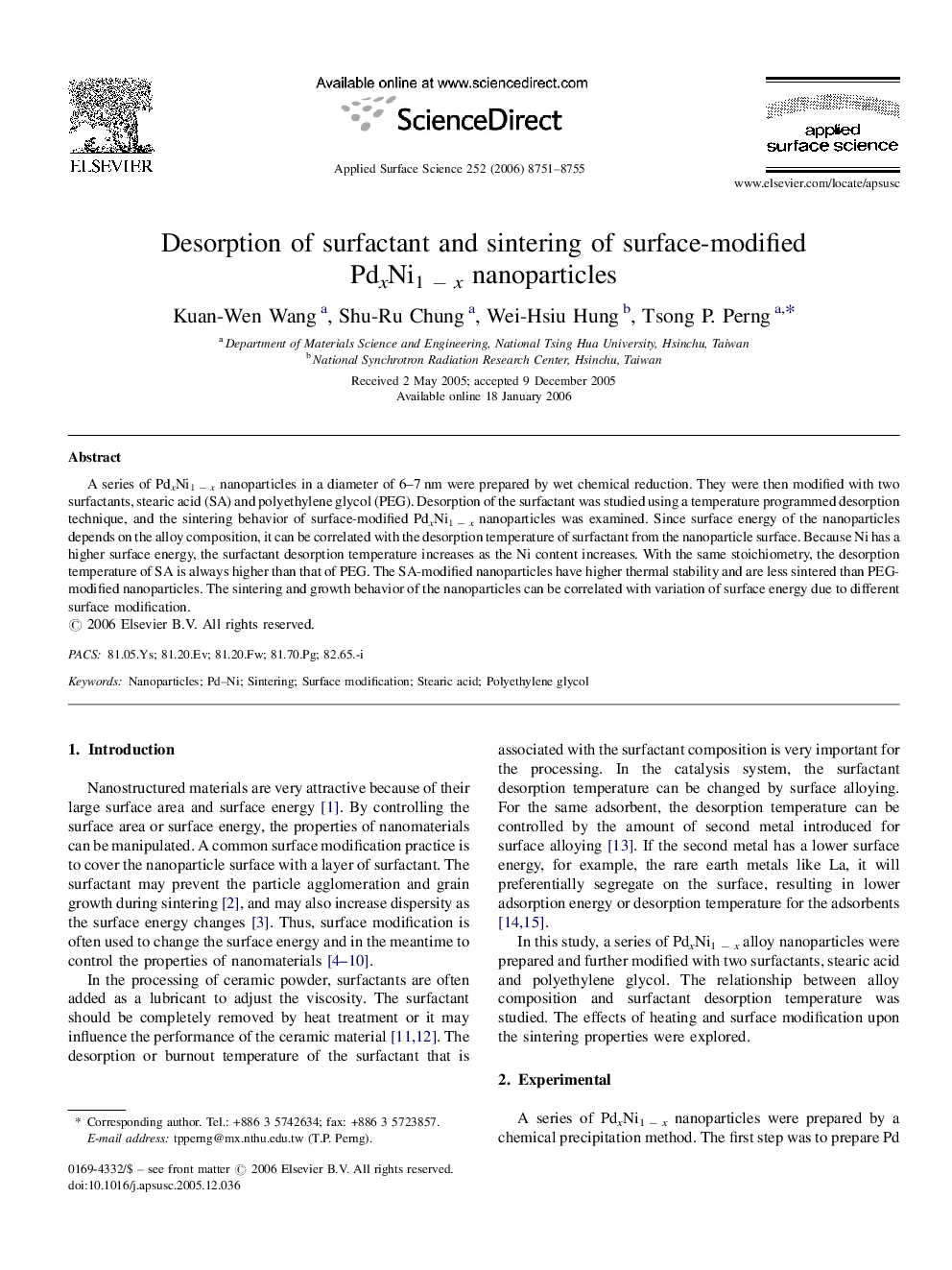| Article ID | Journal | Published Year | Pages | File Type |
|---|---|---|---|---|
| 5368724 | Applied Surface Science | 2006 | 5 Pages |
Abstract
A series of PdxNi1 â x nanoparticles in a diameter of 6-7 nm were prepared by wet chemical reduction. They were then modified with two surfactants, stearic acid (SA) and polyethylene glycol (PEG). Desorption of the surfactant was studied using a temperature programmed desorption technique, and the sintering behavior of surface-modified PdxNi1 â x nanoparticles was examined. Since surface energy of the nanoparticles depends on the alloy composition, it can be correlated with the desorption temperature of surfactant from the nanoparticle surface. Because Ni has a higher surface energy, the surfactant desorption temperature increases as the Ni content increases. With the same stoichiometry, the desorption temperature of SA is always higher than that of PEG. The SA-modified nanoparticles have higher thermal stability and are less sintered than PEG-modified nanoparticles. The sintering and growth behavior of the nanoparticles can be correlated with variation of surface energy due to different surface modification.
Keywords
Related Topics
Physical Sciences and Engineering
Chemistry
Physical and Theoretical Chemistry
Authors
Kuan-Wen Wang, Shu-Ru Chung, Wei-Hsiu Hung, Tsong P. Perng,
